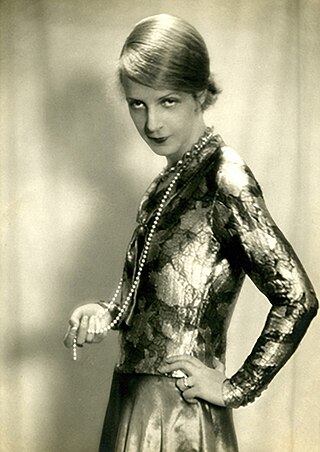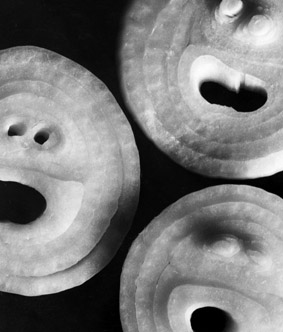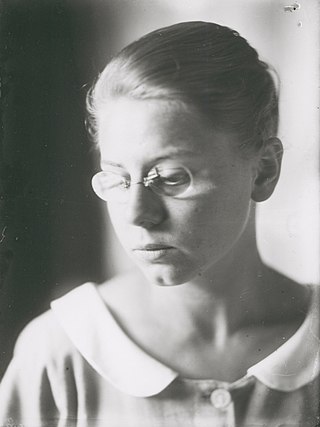Related Research Articles

Heinrich Wölfflin was a Swiss art historian, esthetician and educator, whose objective classifying principles were influential in the development of formal analysis in art history in the early 20th century. He taught at Basel, Berlin and Munich in the generation that saw German art history's rise to pre-eminence. His three most important books, still consulted, are Renaissance und Barock (1888), Die Klassische Kunst, and Kunstgeschichtliche Grundbegriffe.
Sigfried Giedion was a Bohemian-born Swiss historian and critic of architecture. His ideas and books, Space, Time and Architecture, and Mechanization Takes Command, had an important conceptual influence on the members of the Independent Group at the Institute of Contemporary Arts in the 1950s. Giedion was a pupil of Heinrich Wölfflin. He was the first secretary-general of the Congrès International d'Architecture Moderne, and taught at the Massachusetts Institute of Technology, Harvard University, and the ETH-Zurich.

Marguerite Wildenhain, née Marguerite Friedlaender and alternative spelling Friedländer, was an American Bauhaus-trained ceramic artist, educator and author. After immigrating to the United States in 1940, she taught at Pond Farm and wrote three influential books—Pottery: Form and Expression (1959), The Invisible Core: A Potter's Life and Thoughts (1973), and ...that We Look and See: An Admirer Looks at the Indians (1979). Artist Robert Arneson described her as "the grande dame of potters,".
Walter Ferdinand Friedlaender was a German art historian.

Paul Frankl was an art historian born in Austria-Hungary. Frankl is most known for his writings on the history and principles of architecture, which he famously presented within a Gestalt-oriented framework.

Ella Bergmann-Michel was a German abstract artist, photographer and documentary filmmaker. An early student of constructivist art in Germany, her contributions to modern abstract art are often forgotten in American art culture. Bergmann-Michel’s style was very specialized and unique, especially considering the restrictive time in which she was actively working. Most of her work is not titled or signed, making it hard to identify and find in today's art market.

Sibyl Moholy-Nagy was an architectural and art historian. Originally a German citizen, she accompanied her second husband, the Hungarian Bauhaus artist László Moholy-Nagy, in his move to the United States. She was the author of a study of his work, Moholy-Nagy: Experiment in Totality, plus several other books on architectural history.

The Neues Sehen, also known as New Vision or Neue Optik, was a movement, not specifically restricted to photography, which was developed in the 1920s. The movement was directly related to the principles of the Bauhaus. Neues Sehen considered photography to be an autonomous artistic practice with its own laws of composition and lighting, through which the lens of the camera becomes a second eye for looking at the world. This way of seeing was based on the use of unexpected framings, the search for contrast in form and light, the use of high and low camera angles, etc. The movement was contemporary with New Objectivity with which it shared a defence of photography as a specific medium of artistic expression, although Neues Sehen favoured experimentation and the use of technical means in photographic expression.
François Willi Wendt was a French non-figurative painter of German origin belonging to the New École de Paris. After self-exile from Germany in 1937, he adopted France as his native country. In France he became "one of the best and most personal painters of his generation, an artist of great purity and strong culture. His self-exactness, lack of pretension and moral sense delayed the fame he deserved". In collective exhibitions he was associated with the most famous painters of the New École de Paris, particularly Roger Bissière, André Lanskoy, Serge Poliakoff, Pierre Soulages, and Nicolas de Staël. He is also associated with many better-known painters today.
Hans Jantzen was a German art historian who specialized in Medieval art.
Wilhelm Vöge was a German art historian, the discoverer of the Reichenau School of painting and one of the most important medievalists of the early 20th century. Whitney Stoddard called him the "father of modern stylistic analysis" for medieval art.
Kurt Bauch was a German art historian with particular interest in the art of Rembrandt.

Erna Auerbach was a German-born artist and art historian best known for her work on artists of the Tudor-era in England.

Luzia Hartsuyker-Curjel was a Dutch architect of German origin. She is remembered for her innovative designs and for her collaboration with the Italian-born Dutch architect Enrico Hartsuyker. Considerable attention was paid to their Biopolis project, a satellite city planned for The Hague but never realized.

Lou Scheper-Berkenkamp née Hermine Luise Berkenkamp was a German painter, colour designer, the avant-garde author of children's books, fairy-tale illustrator and costume designer.
Edith Marguerite Galliner, née Goldschmidt, (1914–2000) was an Anglo-German artist who painted in acrylic and produced pottery, collages and etchings. Galliner was born in England but grew up in Germany only to return to England when the Nazi Party came to power in 1933. After the Second World War she divided her time between Britain and Germany and exhibited work in both countries.
Ilse Getz was a German-born American painter and collagist active in New York and Newtown, Connecticut, from the 1950s through the 1980s. She specialized on three-dimensional works, made mostly with found objects. She exhibited at several galleries in New York City including the Bertha Schaefer Gallery and Rosenberg Gallery, as well as in Europe, namely in Switzerland, Germany, France and United Kingdom.
Carola Giedion-Welcker was a German-Swiss art historian.
Hans Richard Curjel was a Swiss art historian, conductor and theatre director.
Jean Leppien was a German-French painter.
References
- 1 2 3 4 5 6 "Dr. Herta Wescher, Authority on Art". The New York Times . March 5, 1971. p. 39. ISSN 0362-4331 . Retrieved 2024-03-14.
- 1 2 3 4 5 6 7 8 9 10 11 12 13 "Wescher, Hertha". Dictionary of Art Historians . Retrieved 2024-03-14.
- ↑ Rotermund-Reynard, Ines (2014-12-12). Echoes of Exile: Moscow Archives and the Arts in Paris 1933-1945. Walter de Gruyter GmbH & Co KG. p. 3. ISBN 978-3-11-029065-3.
- ↑ Barnstone, Deborah Ascher (2016), "Front Matter", Beyond the Bauhaus, Cultural Modernity in Breslau, 1918-33, University of Michigan Press, pp. i–vi, ISBN 978-0-472-11990-5 , retrieved 2024-03-14
- ↑ Arts in Exile in Britain 1933-1945: Politics and Cultural Identity. BRILL. 2005-01-01. pp. 249–250. ISBN 978-94-012-0200-8.
- ↑ Adamson, Natalie (2017-07-05). Painting, Politics and the Struggle for the École de Paris, 1944–1964. Routledge. p. 196. ISBN 978-1-351-55518-0.